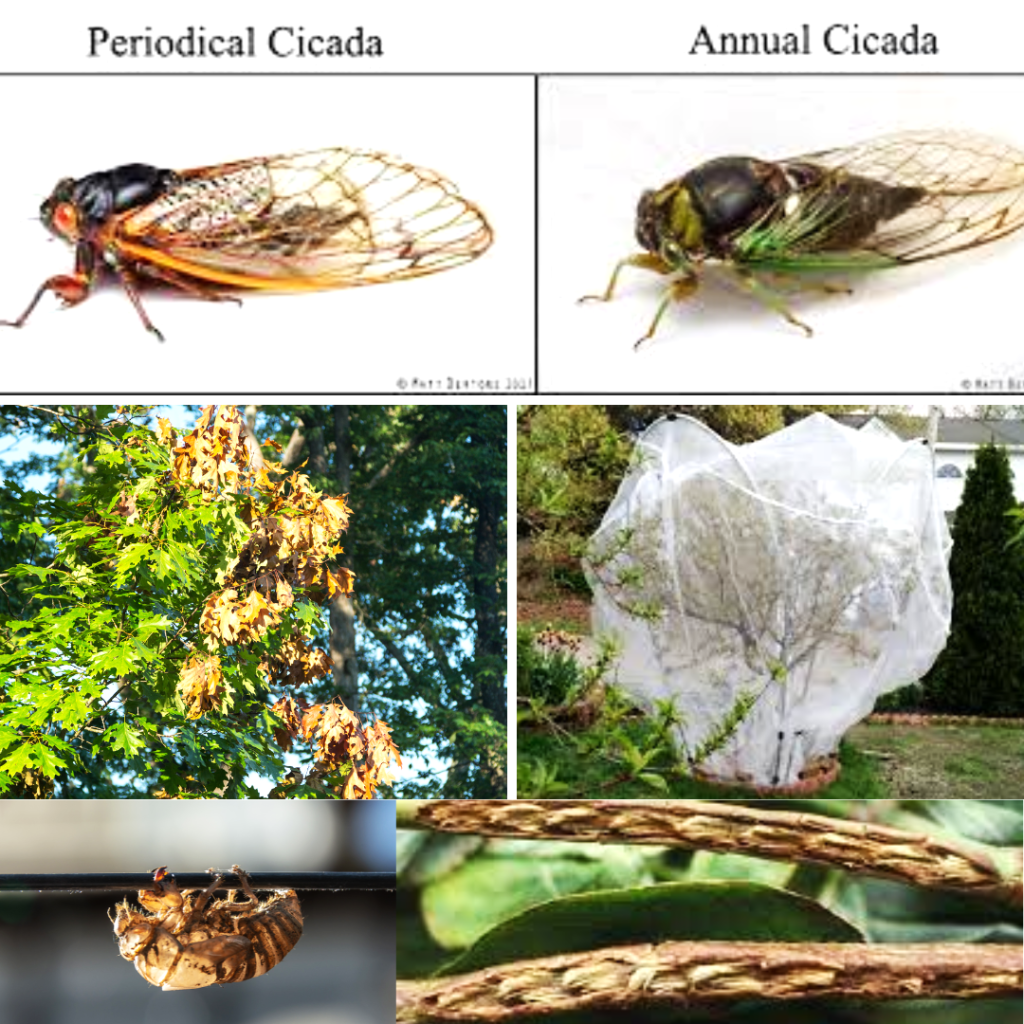What is all the buzz about cicadas this year?

If you have seen any news in the last month, no doubt you have heard, probably many times over, the warning that we are in for a biblical plague-like occurrence of periodical cicadas in 2024.
And if you are on any social media, I guarantee you have heard more misinformation than actual science.
Don’t get me wrong, I certainly use and enjoy technology and social media, but always with a cautious eye. Like your mom always said, don’t believe everything you read or see.
And don’t get me wrong, technology has been a great tool for those in agriculture, horticulture and all things nature. We have learned so much more with the ability to test, track, video animals, plants, soil and natural phenomenon.
So, what is true and not about this upcoming 2024 cicada emergence? And does it really mean anything to you here in Will County? Just like any politician would say — yes and no.
Cicadas, for us, come in two forms — annual and periodical. Every year, I get calls from homeowners asking, “Is this the year?” because they have heard the familiar buzzing and perhaps seen the little brown exoskeletons hooked on a tree or two.
We have the green annual cicada every year. They are metallic green as opposed to the periodical cicada which has those distinctive inferno red eyes and black body. Both are not harmful to people, pets and for the most part, our plants.
And that is what spurred me on to write this column, as I heard a radio personality say they were dangerous and bite. And on social media, all sorts of remedies. There are no remedies, because they are not a problem.
Let’s talk biology. That is where the determination of insects as friend or foe (or both) is determined. So, cicadas couldn’t bite even if they wanted to. Their mouthpart is a little vampire-like straw called a stylet, designed to suck plant juices. The adults do this above ground, the nymphs do this underground to the roots. But, breaking news! Neither cause damage that is significant.
So, what is with this periodical vs annual (also called dog day cicada, because the annual one emerges in our warmest days of summer)? Science has studied and posed lots of hypotheses as to why some cicadas date books aren’t for one year, but for 17 years or 13 years.
The current thought is that if you are food (or prey), it is a great advantage for you to be able to hide out for an extended period of time. See, when you are a bug or a fish or a mammal, and you generate large numbers, the animal that eats you also becomes more successful in the animal kingdom lottery. The goal of most life — animal and plant — is to make more of themselves.
So, if we have a bumper crop of an insect, even if there are few predators, they become more robust, and make more offspring for next year. So now when an insect hatches out, there are a significantly larger number of predators, and it decimates your population. Then since there weren’t so many prey to eat, now the next generation of the predator doesn’t have as many resources, so their population declines, which allows the pests to build up populations again.
And so, it goes … that is the rhythm of nature. Ignore that humans get in and make a mess out of everything trying to “fix” nature. But now, take an insect that somehow has developed a new strategy, to avoid this cycle … And doesn’t emerge for generations of its predator? That will certainly shake up the order of things. Again, this is just a hypothesis, but a reasonable one.
Now why is this year such a big deal. Well somewhere along the way, a group of periodical cicadas bought an inferior datebook and hatched out in 13 years instead of waiting. Eventually, the 17-year cycle and this 13-year cycle would find a year where both emerge at the same time. Well, you guessed it, that is this year.
But guess what? It doesn’t matter. I did an informal poll of my volunteers at our meeting this week, asking if any of them had ever experienced the plague-level populations of cicadas. Three said yes, but then they followed up that they lived elsewhere — outside Will County –at the time.
That doesn’t mean we couldn’t have some large numbers, but nature is a funny thing. No one knows for sure. Take the forecast you look at every day. Cicadas, like all living things, are affected by the environment, both positively and negatively.
Could the mild winters help to foster an increase in numbers? Maybe. But could the droughty, super-hot summers have a negative effect? Equally, maybe.
Periodical cicadas are an innocuous, curiosity of nature that lasts 3-4 weeks. There is only one situation where a gardener needs to take heed. If you have young sapling trees, you may want to tent them with netting when the cicadas are out.
The female cicada, after she gets off of the Love Boat, uses her egg tube (ovipositor) to make tiny slits in the ends of tree branches. On trees beyond sapling stage, rarely do these scars cause issues. Sometimes in a super windy and dry summer, you will see a few inches of the ends of branches turn brown and hanging. They eventually fall off with no real impact on the tree.
If you have saplings that have few branches, the damage could be impactful. So, if you do cover, remember you need to create a complete cover, over the top as well. After the three or so weeks of Cicada Kingdom passes, you can remove the covers.
